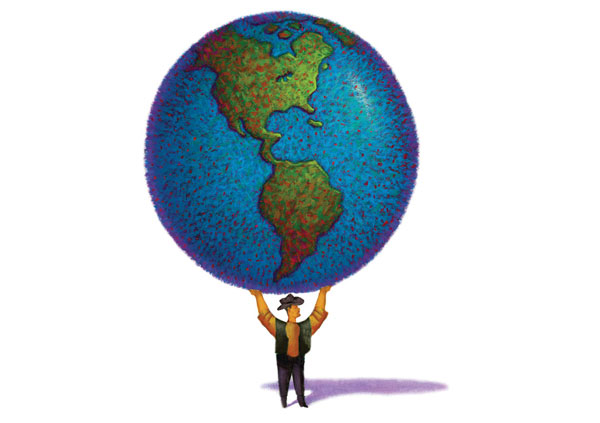April 21, 2016

Friday, April 22, is Earth Day, and while there are many worthwhile ways to reduce our global footprint — reusing, recycling, composting, reducing our use of plastics, or eliminating junk mail to name a few, I’m troubled by the official Earth Day website advising eco-conscious readers to eat less meat to help the planet.
Here’s what the Earth Day Network has to say about going meatless: “Did you know that the meat industry is responsible for approximately 20% of the world’s greenhouse gas emissions? In fact, producing one calorie of meat requires nearly twenty times the amount of energy as one plant calorie!
“With global meat consumption tripling over the last four decades, the meat industry now emits over 36 billion tons of greenhouse gases annually and is showing no signs of slowing down. If we want to make a real dent in the world’s carbon footprint and reduce our own personal footprint, we need to eat less meat. Join us in taking the pledge to not eat meat one day a week and become a part of the Meatless Monday movement!”
Here are five ways that prove the Earth Day Network got it wrong on meat production and the environment. It’s actually more sustainable than most people think!
1. Beef production is more environmentally sustainable today than 30 years ago.
On explorebeef.org, “Today’s cattlemen are significantly more environmentally sustainable then they were 30 years ago. A study by Washington State University in 2007 found that today’s farmers and ranchers raise 13% more beef from 30% fewer cattle. When compared with beef production in 1977, each pound of beef produced today produces 16% less carbon emissions; takes 33% less land; and requires 12% less water.
2. Meat production only produces 2.8% of greenhouse gases, not the 20% Earth Day Network claims.
According to the Environmental Protection Agency, beef production accounts for only 2.8% of the country’s greenhouse gas emissions, compared to 26% for transportation.
READ: How the Washington Post got it wrong on cow burps and greenhouse gases
3. Livestock production provides jobs and food security.
Ron Torell, Nevada Cattlemen’s Association president, writes for BEEF, “About half of the world’s land surface is suitable for rangeland only and not for growing food crops. More than two-thirds of land used for grazing in the U.S. is not suitable for raising crops. Rangelands, however, produce significant quantities of grasses, shrubs and forbs that only livestock can utilize.
“Livestock contributes 40% of the global value of agricultural production and supports the livelihoods and food security of almost 1 billion people. Globally, livestock contributes 15% of total food energy and 25% of dietary protein. Well-managed grazing of rangelands, grasslands, and pastures is the most sustainable form of agriculture known.”
READ: As we prepare for Earth Day 2050, consumers and farmers have work to do
4. Cattle grazing promotes healthy pastures for wildlife.
Facts About Beef shares how ranchers are becoming more sustainable.
“The water comes from rainfall on the surrounding hills and is filtered through the grass as it runs into the ponds, providing access to clean, fresh water for cattle and wildlife alike,” says Debbie Lyons-Blythe, a Kansas cattle rancher. “According to recent studies, up to 75% of wildlife in the U.S. lives on farms and ranches. We manage for the entire ecosystem and diversity is the goal – both in wildlife and grasses. That makes for a healthier grassland and healthier cattle.”
5. Beef production improves water quality, too.
Kim Stackhouse, PhD, National Cattlemen’s Beef Association director of sustainability research, says beef production today uses fewer natural resources, including water, than ever before. In fact, the beef community recently conducted the largest and most comprehensive lifecycle assessment of any food and found that from 2005 to 2011, the beef industry achieved a 3% reduction in water use and a 10% improvement in water quality.
In light of celebrities like Leonardo DiCaprio urging folks to help fight climate change and major news outlets promoting Meatless Mondays to help the planet, beef producers need to be active on social media tomorrow using the hashtag #EarthDay and #EarthDay2016 to highlight the many ways beef production is sustainable and environmentally friendly.
Start by sharing this blog post and help spread the word. If we don’t tell our story, someone else will. I’m proud of my heritage in managing the land to be better for the next generation, and I know you are, too. Let’s show the naysayers how ranchers were green before green was cool! Happy Earth Day 2016!
The opinions of Amanda Radke are not necessarily those of beefmagazine.com or Penton Agriculture.
You might also like:
10 photo finalists celebrating spring
Burke Teichert: How to manage your way out of a hard-calving cowherd
You May Also Like



